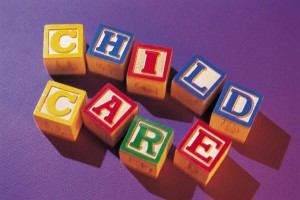During the summer many parents may be planning the time between school years for their children while they work or look for work. The IRS wants to remind taxpayers that are considering their summer agenda to keep in mind a tax credit that can help them offset some day camp expenses.
The Child and Dependent Care Tax Credit is available for expenses incurred during the summer and throughout the rest of the year. Here are six facts the IRS wants taxpayers to know about the credit:
1. Children must be under age 13 in order to qualify.
2. Taxpayers may qualify for the credit, whether the childcare provider is a sitter at home or a daycare facility outside the home.
3. You may use up to $3,000 of the unreimbursed expenses paid in a year for one qualifying individual or $6,000 for two or more qualifying individuals to figure the credit.
4. The credit can be up to 35 percent of qualifying expenses, depending on income.
5. Expenses for overnight camps or summer school/tutoring do not qualify.
6. Save receipts and paperwork as a reminder when filing your 2012 tax return. Remember to note the Employee Identification Number (EIN) of the camp as well as its location and the dates attended.
Category: Tax Tips
WASHINGTON —With the early start of this year’s hurricane season, the Internal Revenue Service encourages individuals and businesses to safeguard themselves against natural disasters by taking a few simple steps.
Create a Backup Set of Records Electronically
Taxpayers should keep a set of backup records in a safe place. The backup should be stored away from the original set.
Keeping a backup set of records –– including, for example, bank statements, tax returns, insurance policies, etc. –– is easier now that many financial institutions provide statements and documents electronically, and much financial information is available on the Internet. Even if the original records are provided only on paper, they can be scanned into an electronic format. With documents in electronic form, taxpayers can download them to a backup storage device, like an external hard drive, or burn them to a CD or DVD.
Document Valuables
Another step a taxpayer can take to prepare for disaster is to photograph or videotape the contents of his or her home, especially items of higher value. The IRS has a disaster loss workbook, Publication 584, which can help taxpayers compile a room-by-room list of belongings.
A photographic record can help an individual prove the market value of items for insurance and casualty loss claims. Photos should be stored with a friend or family member who lives outside the area.
Update Emergency Plans
Emergency plans should be reviewed annually. Personal and business situations change over time as do preparedness needs. When employers hire new employees or when a company or organization changes functions, plans should be updated accordingly and employees should be informed of the changes.
Check on Fiduciary Bonds
Employers who use payroll service providers should ask the provider if it has a fiduciary bond in place. The bond could protect the employer in the event of default by the payroll service provider.
IRS Ready to Help
If disaster strikes, an affected taxpayer can call 1-866-562-5227 to speak with an IRS specialist trained to handle disaster-related issues.
Back copies of previously-filed tax returns and all attachments, including Forms W-2, can be requested by filing Form 4506, Request for Copy of Tax Return.
Alternatively, transcripts showing most line items on these returns can be ordered on-line, by calling 1-800-908-9946 or by using Form 4506T-EZ, Short Form Request for Individual Tax Return Transcript or Form 4506-T, Request for Transcript of Tax Return.
Business Taxes for the Self-Employed
The IRS has released a webinar to help self-employed small business owners determine what business taxes they are responsible for. Click on the link below to access the webinar. The link will open in a new window.
IRS Webinar – Business Taxes Basics for the Self-Employed
The online webinar covers:
• Recordkeeping
• Reporting profit or loss
• Self-employment tax and estimated tax payments
• Husband and wife businesses
What Should I Do With My Tax Records?
Now that you have filed your taxes, what do I need to save and when can I get rid of old records?
Keeping good records after you file your taxes is a good idea, as they will help you with documentation and substantiation if the IRS selects your return for an audit. Here are a couple of tips about keeping good records.
1. Normally, tax records should be kept for three years.
2. Some documents — such as records relating to a home purchase or sale, stock transactions, IRA and business or rental property — should be kept longer.
3. In most cases, the IRS does not require you to keep records in any special manner. Generally speaking, however, you should keep any and all documents that may have an impact on your federal tax return.
4. Records you should keep include bills, credit card and other receipts, invoices, mileage logs, canceled, imaged or substitute checks, proofs of payment, and any other records to support deductions or credits you claim on your return.
5. For more information on what kinds of records to keep, see IRS Publication 552, Recordkeeping for Individuals, which is available from the IRS website found here.
[seo_contact_page_social_media_only]
The IRS has released a webinar to help small business owners determine what kind of worker they have. Click on the link below to access the webinar. The link will open in a new window.
Home Office Deductions
Do you work from home? The IRS has a Home Office Deduction that you may qualify for. The IRS has the following six requirements to help you determine if you qualify for the home office deduction.
1. Generally, in order to claim a business deduction for your home, you must use part of your home exclusively and regularly:
• as your principal place of business, or
• as a place to meet or deal with patients, clients or customers in the normal course of your business, or
• in any connection with your trade or business where the business portion of your home is a separate structure not attached to your home.
2. For certain storage use, rental use or daycare-facility use, you are required to use the property regularly but not exclusively.
3. Generally, the amount you can deduct depends on the percentage of your home used for business. Your deduction for certain expenses will be limited if your gross income from your business is less than your total business expenses.
4. There are special rules for qualified daycare providers and for persons storing business inventory or product samples.
5. If you are self-employed, use Form 8829, Expenses for Business Use of Your Home to figure your home office deduction and report those deductions on Form 1040 Schedule C, Profit or Loss From Business.
6. If you are an employee, additional rules apply for claiming the home office deduction. For example, the regular and exclusive business use must be for the convenience of your employer.
For more information see IRS Publication 587, Business Use of Your Home, available at www.IRS.gov or by calling 800-TAX-FORM (800-829-3676).
Contact Bonafide Accounting Services to help you sort through your expenses, and keep up with your proper home office deductions today.
Ten Tips on a Tax Credit for Child and Dependent Care Expenses
Did you know you may qualify to claim the Child and Dependent Care Credit if you paid someone to care for your child, spouse, or dependent last year. Below are 10 important things the IRS wants you to know about claiming the credit for your expenses.
1. The care must have been provided for one or more qualifying persons. A qualifying person is your dependent child age 12 or younger when the care was provided. Additionally, your spouse and certain other individuals who are physically or mentally incapable of self-care may also be qualifying persons. You must identify each qualifying person on your tax return.
2. The care must have been provided so you – and your spouse if you are married filing jointly – could work or look for work.
3. You – and your spouse if you file jointly – must have earned income from wages, salaries, tips, other taxable employee compensation or net earnings from self-employment. One spouse may be considered as having earned income if they were a full-time student or were physically or mentally unable to care for themselves.
4. The payments for care cannot be paid to your spouse, to the parent of your qualifying person, to someone you can claim as your dependent on your return, or to your child who will not be age 19 or older by the end of the year even if he or she is not your dependent. You must identify the care provider(s) on your tax return.
5. Your filing status must be single, married filing jointly, head of household or qualifying widow(er) with a dependent child.
6. The qualifying person must have lived with you for more than half of 2011. There are exceptions for the birth or death of a qualifying person, or a child of divorced or separated parents. See Publication 503, Child and Dependent Care Expenses.
7. The credit can be up to 35 percent of your qualifying expenses, depending upon your adjusted gross income.
8. For 2011, you may use up to $3,000 of expenses paid in a year for one qualifying individual or $6,000 for two or more qualifying individuals to figure the credit.
The qualifying expenses must be reduced by the amount of any dependent 9. care benefits provided by your employer that you deduct or exclude from your income, such as a flexible spending account for daycare expenses.
10. If you pay someone to come to your home and care for your dependent or spouse, you may be a household employer and may have to withhold and pay Social Security and Medicare tax and pay federal unemployment tax. See Publication 926, Household Employer’s Tax Guide.
For more information on the Child and Dependent Care Credit, see Publication 503, Child and Dependent Care Expenses. You may download these free publications from www.irs.gov or order them by calling 800-TAX-FORM (800-829-3676).




